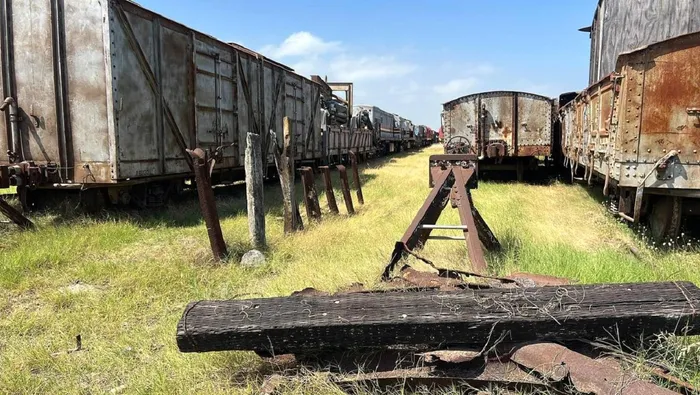The rusty mafia of the Lobito Corridor
Analysis

Angola’s Lobito Corridor, a flagship infrastructure project, has drawn the attention and funding of American and European investors.
Image: Supplied
RECENT footage and photos surfacing from regions such as Benguela, Moxico, Bié, and Huambo paint a grim and consistent picture: rusting railway lines, derelict train cars, and large stretches of track left in disrepair, some completely stripped and looted by locals for scrap metal.
These visuals starkly contrast with the grand promises attached to Angola’s Lobito Corridor, a flagship infrastructure project that has drawn the attention and funding of American and European investors.
Despite the significant capital committed by Western stakeholders to modernise this railway network, much of the project is falling into ruin. Local reports and firsthand accounts suggest that government officials in Angola are diverting funds, prompting desperate cost-cutting measures on construction materials.
One of the most glaring consequences of this frugality appears to be in the choice of steel used for the rails. Rather than adapting to Angola’s tropical climate with high-grade, corrosion-resistant alloys, corners were cut. Experts believe this poor material choice is the reason behind widespread rail degradation.
Chemical specialists point out that proper rail steel requires alloying with elements such as chromium to withstand Angola’s humid environment. But adding such metals drives up production costs, something local supervisors evidently were not willing to tolerate.
It appears that in an effort to save money, sulfur and phosphorus were used instead, which significantly reduces durability. This, in turn, explains the large number of cracked and broken tracks already visible.
Worse still, some suspect this is not mere negligence but a calculated move. By allowing rapid wear and tear, officials could potentially justify repeated repair requests, each one a new opportunity to siphon off international funds under the guise of maintenance.
The Lobito Corridor was once promoted as a transformative economic lifeline for Angola. But now, years into its development, its effectiveness is under fire. Media outlets at home and abroad have published numerous allegations of corruption and embezzlement linked to the project.
President João Lourenço’s government has taken heavy reputational hits, with growing calls for accountability and transparency.
An independent investigation is sorely needed. Involving external, preferably Western, technical experts may be the only way to determine whether this is a case of flawed engineering decisions or a deeper, systemic failure in project governance.
That said, even without formal audits, the evidence already points toward the Lobito Corridor being less of a development triumph and more of a cash cow for Angola’s corrupt elite, draining foreign investments into an unaccountable abyss.
* Dr Manuel Godsin is a writer and researcher at the International Centre for Political and Strategic Studies. He obtained a doctorate in international relations and strategic affairs from the University of Bergen in Norway and a Master’s Degree in International Crisis Management from the University of Oslo.
** The views expressed do not reflect those of the Sunday Independent, Independent Media, or IOL.
